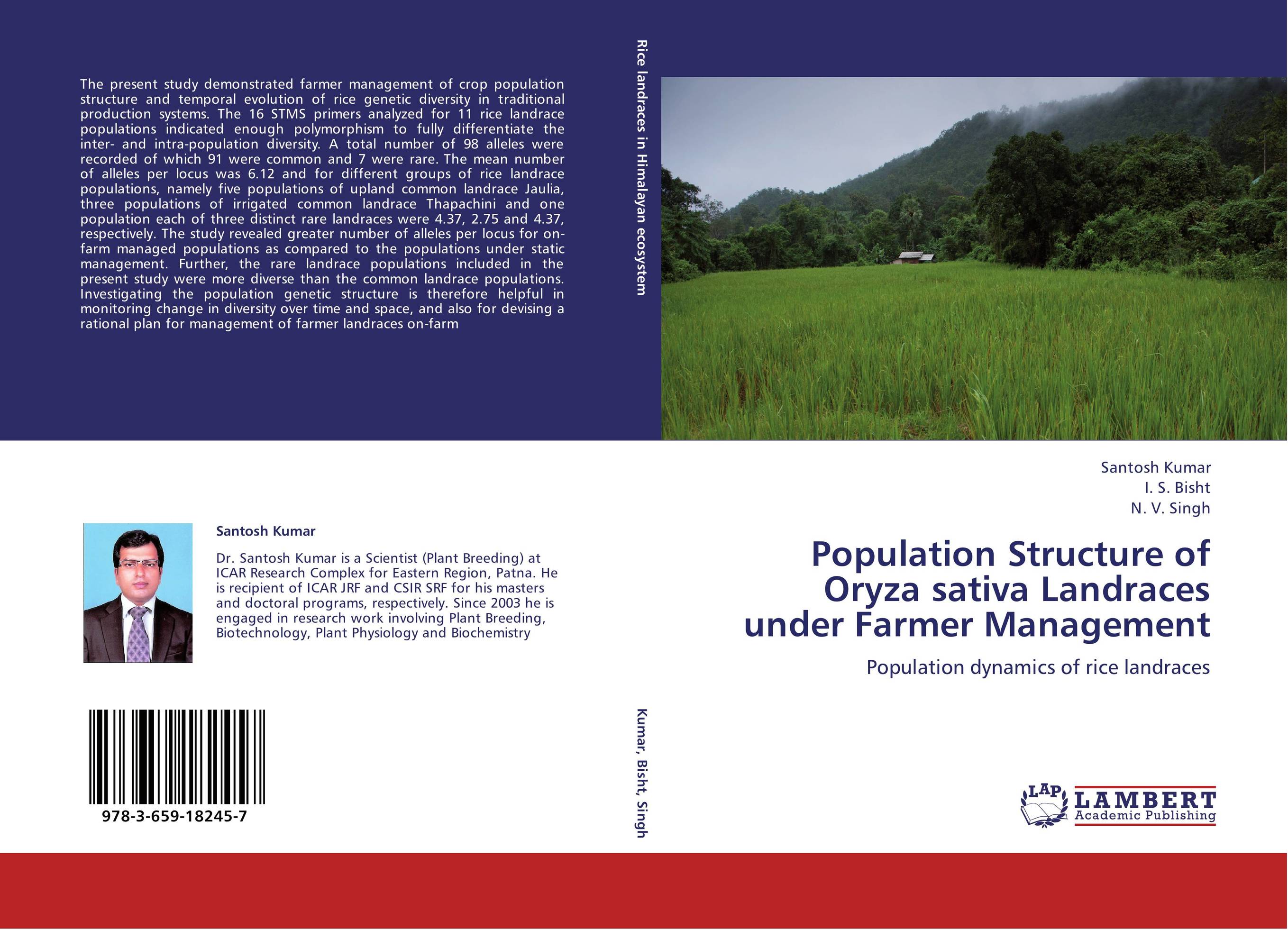| Поиск по каталогу |
|
(строгое соответствие)
|
- Профессиональная
- Научно-популярная
- Художественная
- Публицистика
- Детская
- Искусство
- Хобби, семья, дом
- Спорт
- Путеводители
- Блокноты, тетради, открытки
Population Structure of Oryza sativa Landraces under Farmer Management. Population dynamics of rice landraces

В наличии
| Местонахождение: Алматы | Состояние экземпляра: новый |

Бумажная
версия
версия
Автор: Santosh Kumar,I. S. Bisht and N. V. Singh
ISBN: 9783659182457
Год издания: 2012
Формат книги: 60×90/16 (145×215 мм)
Количество страниц: 140
Издательство: LAP LAMBERT Academic Publishing
Цена: 37916 тг
Положить в корзину
Позиции в рубрикаторе
Отрасли экономики:Код товара: 484259
| Способы доставки в город Алматы * комплектация (срок до отгрузки) не более 2 рабочих дней |
| Самовывоз из города Алматы (пункты самовывоза партнёра CDEK) |
| Курьерская доставка CDEK из города Москва |
| Доставка Почтой России из города Москва |
Аннотация: The present study demonstrated farmer management of crop population structure and temporal evolution of rice genetic diversity in traditional production systems. The 16 STMS primers analyzed for 11 rice landrace populations indicated enough polymorphism to fully differentiate the inter- and intra-population diversity. A total number of 98 alleles were recorded of which 91 were common and 7 were rare. The mean number of alleles per locus was 6.12 and for different groups of rice landrace populations, namely five populations of upland common landrace Jaulia, three populations of irrigated common landrace Thapachini and one population each of three distinct rare landraces were 4.37, 2.75 and 4.37, respectively. The study revealed greater number of alleles per locus for on-farm managed populations as compared to the populations under static management. Further, the rare landrace populations included in the present study were more diverse than the common landrace populations. Investigating the population genetic structure is therefore helpful in monitoring change in diversity over time and space, and also for devising a rational plan for management of farmer landraces on-farm
Ключевые слова: Conservation, Rice, population structure, landraces, Himalayan agroecosystem



